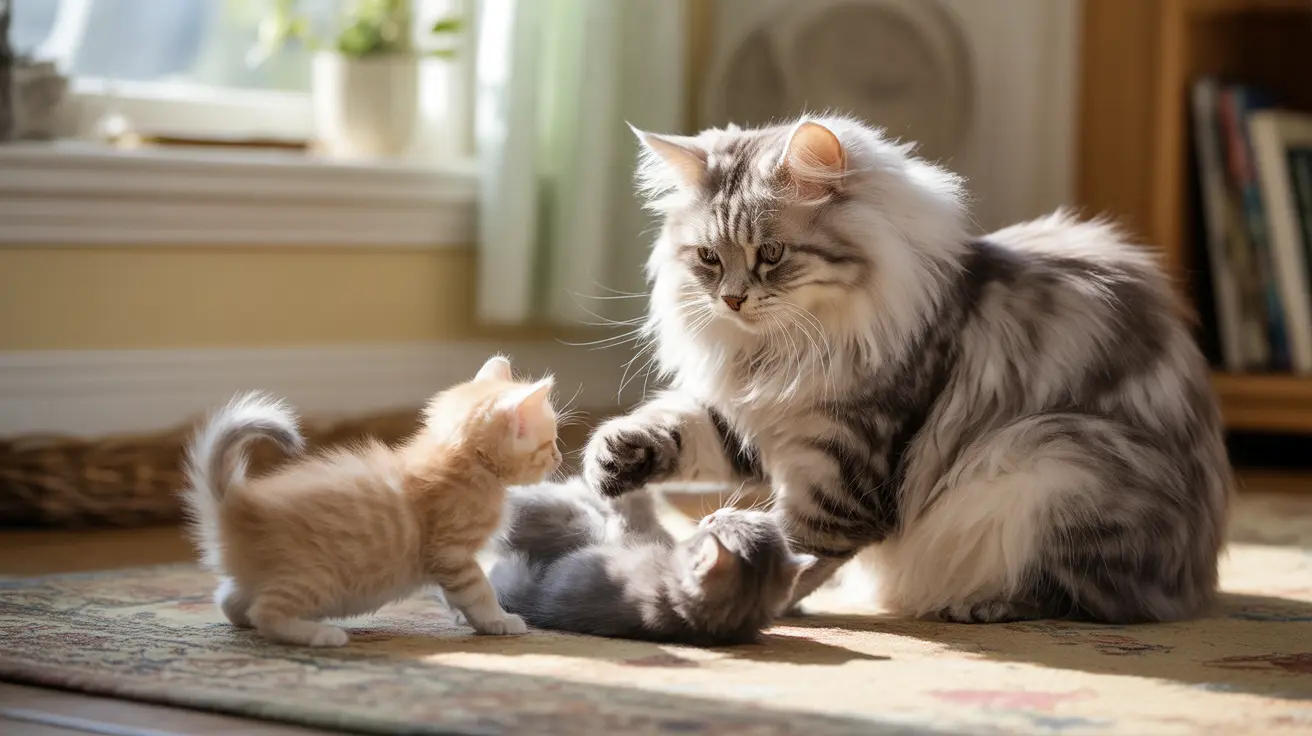Many cat owners are surprised to learn that their nursing cat can indeed become pregnant again while still feeding her kittens. This biological capability, while natural, raises important considerations for both feline health and responsible pet ownership.
Understanding the reproductive capabilities of nursing cats is crucial for preventing unwanted pregnancies and ensuring the health of both mother cats and their kittens. Let's explore the fascinating world of feline fertility and what it means for nursing mothers.
The Biology of Postpartum Feline Fertility
Female cats have a remarkable reproductive system that allows them to become fertile again very quickly after giving birth. Unlike some other mammals, nursing kittens does not prevent a cat from entering her heat cycle and becoming pregnant again.
A mother cat can return to fertility as soon as 4 weeks after giving birth, even while actively nursing her kittens. This quick return to fertility is part of cats' evolutionary strategy to maximize reproductive success in the wild.
Signs of Pregnancy in a Nursing Cat
Detecting pregnancy in a nursing cat can be challenging, as many of the typical signs may be masked by the ongoing nursing process. However, there are several indicators to watch for:
- Increased appetite beyond normal nursing needs
- Further enlargement of the already swollen belly
- Changes in behavior or energy levels
- "Pinking up" of nipples that aren't currently being used for nursing
- Nesting behavior, even while caring for current litter
Health Implications and Risks
When a nursing cat becomes pregnant, it places significant stress on her body. She must simultaneously produce milk for her current litter while supporting the development of new kittens. This double burden can lead to:
- Nutritional deficiencies
- Decreased milk production for nursing kittens
- Weakened immune system
- Physical exhaustion
- Potential complications in both pregnancies
Prevention and Management
The most effective way to prevent pregnancy in a nursing cat is through careful management and eventual spaying. Consider these important steps:
- Keep nursing mothers separated from male cats
- Schedule spaying as soon as kittens are weaned
- Provide a secure, indoor environment
- Consult with your veterinarian about optimal timing for spaying
Special Care Requirements
If your nursing cat does become pregnant, she'll need extra support to maintain her health and care for both her nursing kittens and developing pregnancy:
- High-quality, calorie-dense nutrition
- Frequent, small meals
- Clean, quiet nesting areas
- Regular veterinary check-ups
- Supplemental feeding for nursing kittens if needed
Frequently Asked Questions
Can a nursing cat become pregnant again while still feeding her kittens?
Yes, a nursing cat can become pregnant while still feeding her kittens. Lactation does not prevent fertility in cats, and they can enter heat as early as 4 weeks after giving birth.
How soon after giving birth can a cat return to heat and get pregnant again?
Cats can return to heat and become pregnant as soon as 4-6 weeks after giving birth, even while still nursing their kittens.
What signs indicate pregnancy in a cat that is still nursing her kittens?
Key signs include increased appetite beyond normal nursing needs, further abdominal enlargement, behavioral changes, and "pinking up" of unused nipples.
How should I prevent my nursing cat from getting pregnant again?
Keep your nursing cat separated from male cats, consider indoor confinement, and plan for spaying once the kittens are weaned.
What are the health risks for a cat that becomes pregnant while nursing her kittens?
Risks include nutritional deficiencies, decreased milk production, exhaustion, weakened immune system, and potential complications for both the nursing kittens and developing pregnancy.
Remember, responsible pet ownership includes managing your cat's reproductive health. Consult with your veterinarian about the best timing for spaying to prevent unwanted pregnancies and ensure your cat's optimal health.






